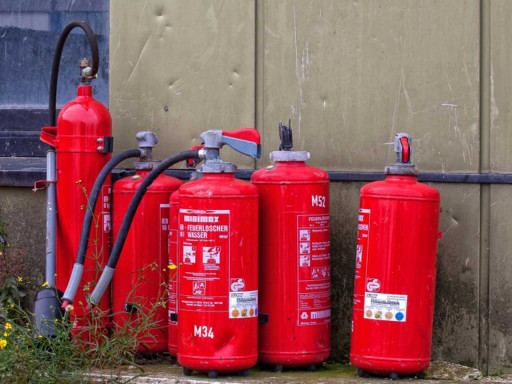Between April 2018 and March 2019, the Fire and Rescue Services {FRSs) were called out to attend 182,825 fire, of which 15,005 occurred in buildings other than the home.
So yes, it does happen.
Health and safety is about controlling risk and providing a safe environment for your workers and anyone that visits your premises. It’s about prevention.
What can you do to prevent fire on your premises?
Firstly, every workplace is different and it’s why a risk assessment is needed. This doesn’t have to be complicated or challenging and a five-step process is all you need.
- Identify fire hazards
- Identify people at risk
- Evaluate, remove or reduce the risks
- Record your findings, prepare an emergency plan and provide training
- Review and update the fire risk assessment regularly
You might have noticed the word training above which applies to your Fire Wardens. Sadly, there is no written guidance on how many you might need and it will depend on the size and type of business.
As an employer, you are legally required under the Management of Health and Safety at Work Regulations 1999 to prepare an Emergency Plan. Your Fire Wardens are designated the responsibility of executing the plan in an emergency situation.
An emergency plan once created is shared with your workforce and it should be practised regularly.
The minimum fire precautions you will need to take include fire detection and warning system to warn people in all circumstances. A method for fighting small fires if safe to do so and safe routes for people to leave the premises (including suitable fire exits).
Fire Safety: what to check and test
The type of fire protection and detection identified in your fire risk assessment will vary again depending on the size and type of business but here is a list of items that should be checked or tested on a regular basis.
✔ All corridors, stairs and escape routes (including external ones) are free from obstruction and slip and trip hazards.
✔ All fire-resisting doors and fire exit doors are working correctly and are not wedged open or obstructed.
✔ All emergency lighting and fire exit signs are clearly visible and in working order.
✔ All fire detection systems are unobstructed.
✔ All fire-fighting equipment e.g. extinguishers, hose reels and fire blankets are unobstructed, in the correct place with safety pin / clip and security tag fitted.
✔ All break glass units visible and unobstructed.
What No Safety can support you in creating or create for you risk assessment documents and provide training tailored to your specific need if necessary. Call 01722 326 390 to find out more and to discuss your need.

